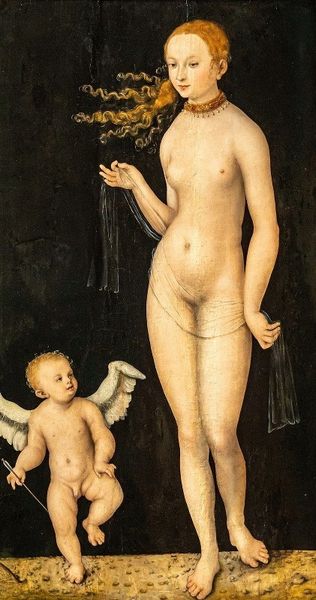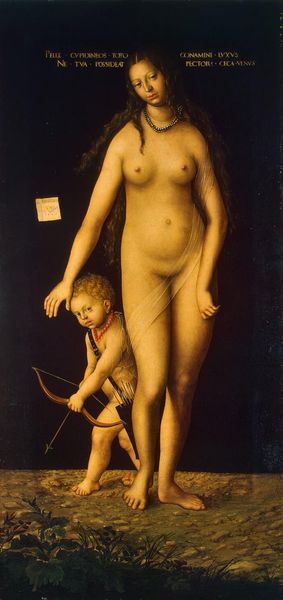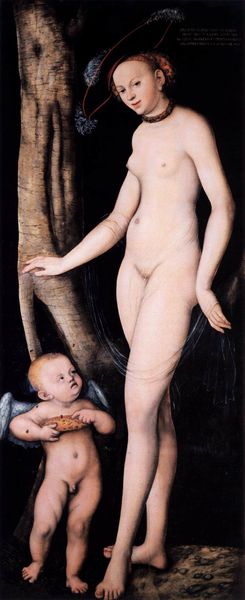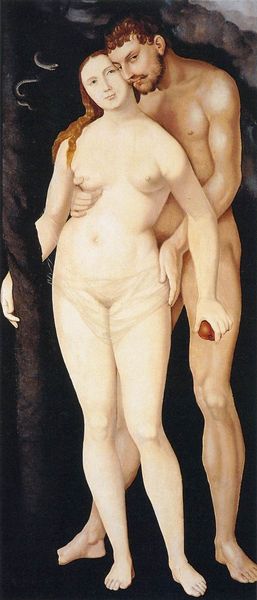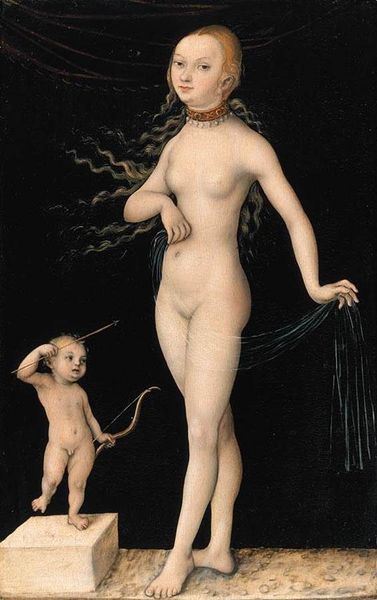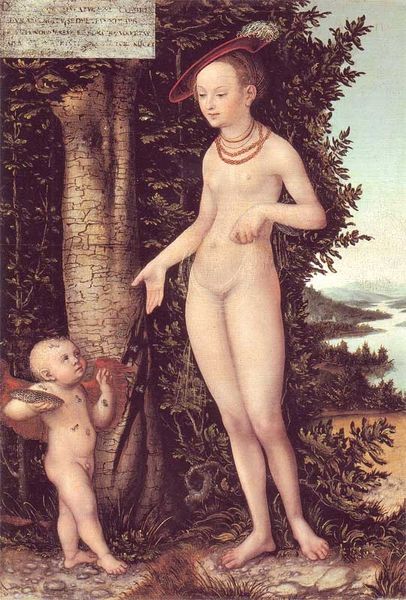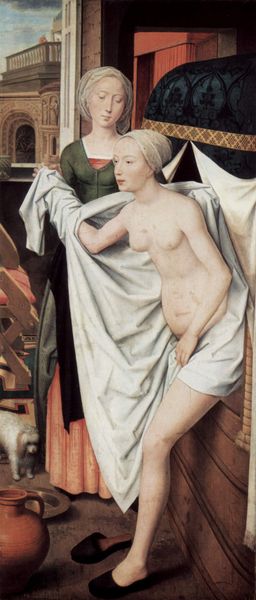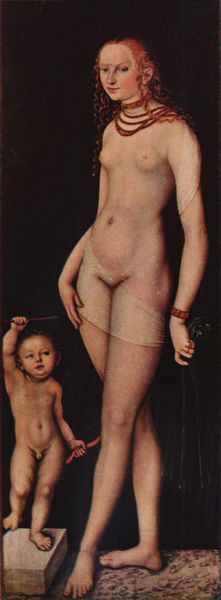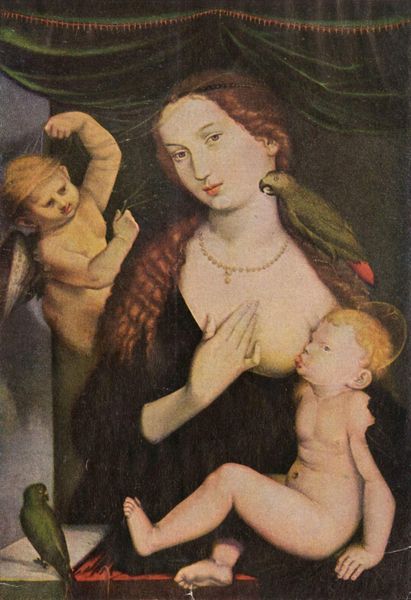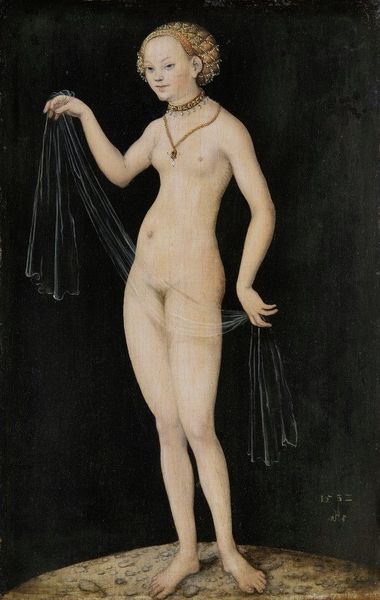
painting, oil-paint
#
portrait
#
allegory
#
painting
#
oil-paint
#
oil painting
#
roman-mythology
#
cupid
#
mythology
#
human
#
italian-renaissance
#
nude
#
portrait art
Dimensions: 196 x 89 cm
Copyright: Public domain
Editor: So, this is "Venus and Cupid" painted by Lucas Cranach the Elder around 1540. It’s an oil painting, and it's currently at the Alte Pinakothek in Munich. My initial impression is…intriguing. There's this stark contrast between Venus' pale skin and the dark background. Also, Cupid is very baby-like. What are your thoughts on it? What strikes you most about this work? Curator: It’s fascinating how Cranach uses classical mythology, Venus and Cupid, to comment on social and moral codes of his time. Nudity, of course, has always been a complex subject. Think about the Reformation backdrop against which this was painted. Cranach was a court painter to the Electors of Saxony, supporters of Martin Luther. So, how does that association and their ideologies influence the way he chooses to depict the female nude? Editor: So, the Reformation is critical here. Is it a way of showing some kind of restrained sensuality that would not necessarily invite condemnation, or...? Curator: Exactly! The historical and religious context informs the entire viewing. Does the depiction of Venus, with her specific body type and attire (or lack thereof), reflect societal ideals or challenge them? The political climate plays an enormous part in how art is made, disseminated, and viewed, influencing how acceptable this type of artwork would have been to the public. What do you notice about Cupid's pose, by the way? Editor: He seems to be on this unstable, almost cartoon-ish box... it kind of undermines his power? Maybe to reinforce her supremacy over love, as controlled by Venus. Curator: Precisely! See how art is never divorced from its social and institutional settings? Knowing who commissioned, collected, and displayed the artwork can further our interpretation of pieces like these, as well as recognizing these iconographies in circulation in society. Editor: I never thought of approaching this image in terms of political climate, or in regard to society at that time. This has definitely given me a lot to reflect upon. Curator: Yes! Context is key when studying art from the past; helps make their arguments feel relevant in our world today.
Comments
No comments
Be the first to comment and join the conversation on the ultimate creative platform.
